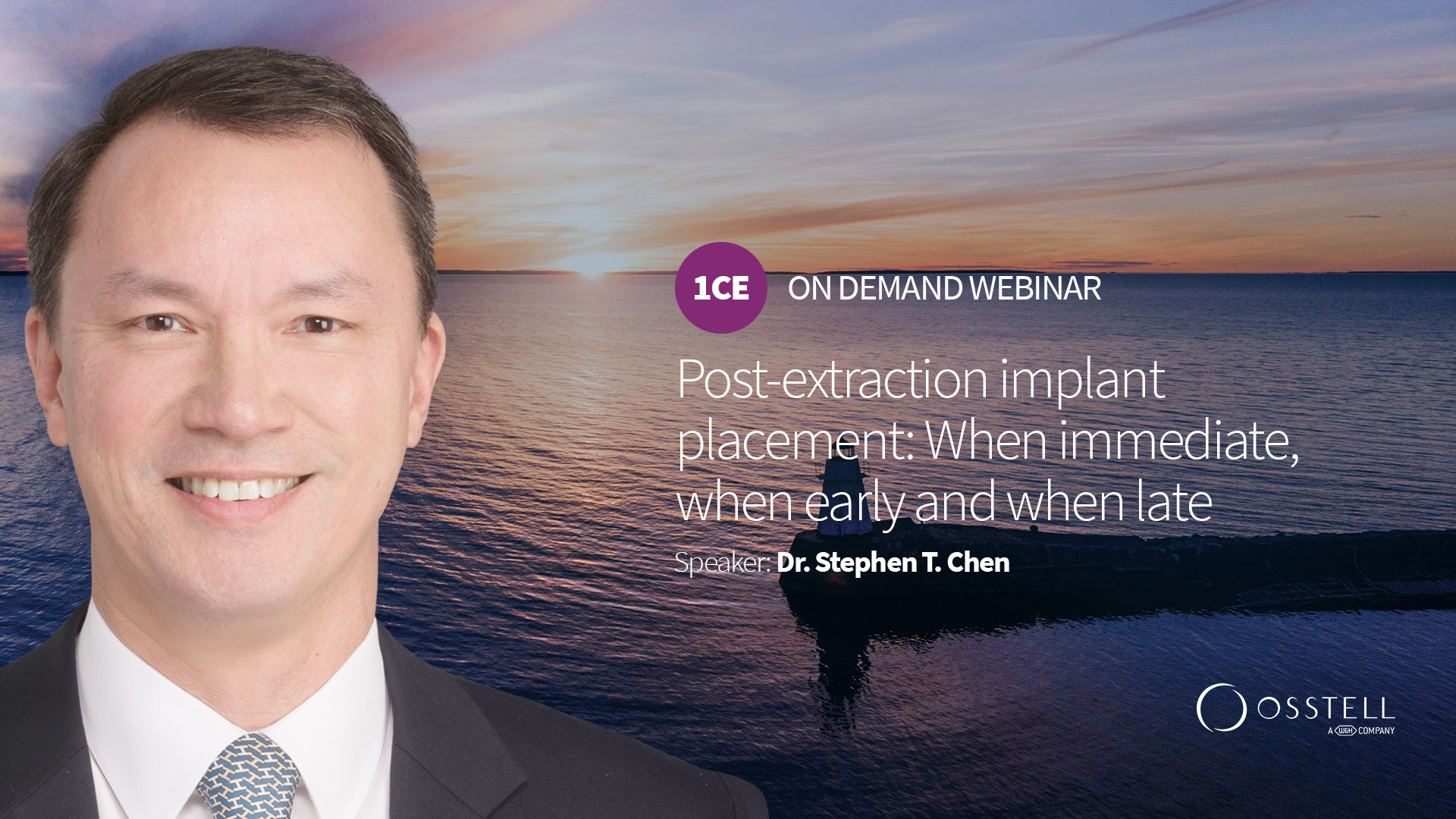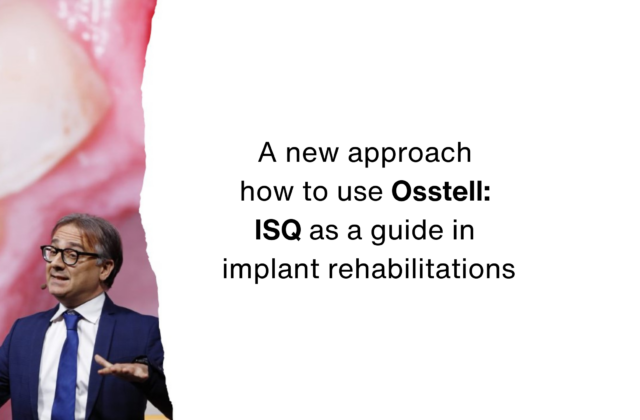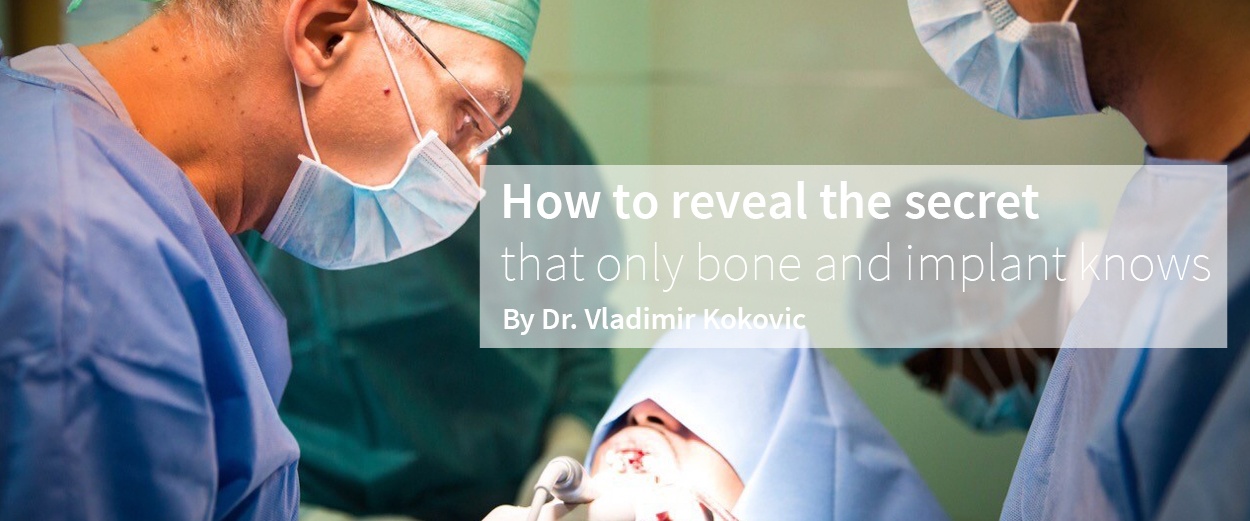
Dr. Stephen T Chen is a specialist periodontist in private practice in Melbourne, Australia. He holds the position of Clinical Associate Professor at the School of Dentistry at the University of Melbourne. He graduated BDS (Malaya) in 1983, MDSc (Melbourne) in 1987, FRACDS in 1988 and PhD in 2008. Dr Chen’s scientific interests are in the field of tissue regeneration and post-extraction implant outcomes. He has published over 30 papers, authored 2 textbooks and contributed chapters to 6 textbooks.
Questions for Dr. Stephen T Chen during the Symposium
At this year’s Osstell ISQ Symposium, Dr. Stephen T Chen was one out of five renowned speakers that contributed with his expertise and knowledge. After his lecture “Post-extraction implant placement: When immediate, when early and when late”, a live Q&A was held where Dr. Chen received lots of questions from viewers. Not all questions were answered during the Q&A session, but Dr. Stephen T Chen has answered them for you here in this blog post.
In buccal dehiscence case where recession risk is higher, is it better to use ceramic implants along with soft tissue graft?
Dr. Stephen T Chen: The problem is not with the implant type (titanium versus ceramic) but that the soft tissue thins or recedes. If steps are taken to prevent thinning and/or recession and it doesn’t really matter what the underlying implant material is. Adopting an early implant placement (type 2) approach allows spontaneous soft tissue thickening to take place and grafting of a dehiscence defect with the GBR procedure in a predictable way.
Does every case need tissue graft after bone grafting?
Dr. Stephen T Chen: A CT graft may be considered if the tissues are thin. In an immediate implant (type 1) situation where the phenotype is relatively thin, in addition of a connective tissue will increase soft tissue volume. Of course, if the guidelines are followed and only thick tissue phenotype type cases are selected, then a CT graft is not necessary. With early implant placement, there is spontaneous thickening of the soft tissues 6 to 8 weeks after extraction. It is only on rare occasions that I need to add extra connective tissue with a graft in these cases. Usually, the soft tissue thickening that occur spontaneously is sufficient.
How do you apply ISQ values in determining your loading protocol?
Dr. Stephen T Chen: I would use ISQ with an immediate implant if I was anticipating an immediate loading (type IA) protocol. Then you would want reasonably high ISQ readings to feel confident about loading the implant. Recommendation is ISQ value > 70. If this is not achieved at the time of immediate implant placement, and I would not load immediately and revert to a conventional loading protocol.
If you have thick biotype but thin intact facial bone right after extraction of an anterior maxillary incisor: would you recommend immediate placement if simultaneous contour augmentation is done?
Dr. Stephen T Chen: In general, thick soft tissue phenotype usually corresponds to a thick bone phenotype, but not always. This is where pre-treatment CBCT scans can really provide very useful information in planning treatment. If the soft tissue was thick, but the bone appeared relatively thin, I would still consider an immediate placement and loading protocol.
Would you recommend early placement if there is a 2-bony wall defect (for example due to periodontitis) at the anterior maxillary region? Or is early placement only indicated with 1- bone wall defect (only facial bone wall recession)?
Dr. Stephen T Chen: You may have the classification back to front. If there is only loss of the facial bone wall, then there is usually a 2-wall defect after the implant is placed i.e. the mesial and distal walls are present. In this case GBR is very effective at reconstructing the facial bone. If there is significant bone loss i.e. periodontitis and the result is a 1-wall defect, the predictability of simultaneous implant placement and grafting diminishes quite considerably. In this type of case, I would graft to reconstruct the ridge as a stage procedure. The implant within be placed some months later after graft maturation.
You mentioned that regardless of the GBR the resorption of the bucal plate will happen. Will that happen always or what will be the factors increasing this resorption? Does the thickness of the remaining buccal plate >1mm will prevent this resorption or will this happen regardless?
Dr. Stephen T Chen: In my experience, the facial bone in the coronal half almost always completely resorbs. When you have a thick bone phenotype, the facial bone may take some time to resorb leaving behind the graft material as the new bone wall. I have seen this when I have had occasion to re-open a site after some years. You can see the particulate BioOss at the surface even though the facial bone was intact and thick when the graft was placed. Natural bone undergoes modelling changes.
Thank you everyone joining us at the Osstell Scientific Symposium. See you again next year!
You can watch the webinar on-demand here.
More information about the symposium can be found on www.osstellcampus.com.



Add comment